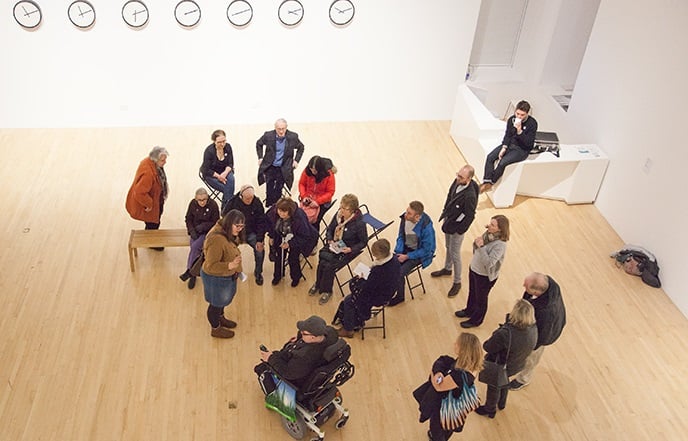
Photo: illuminique on Visual Hunt / CC BY
Cultural attractions still fall short on accessibility, finds report
Only one in four of the top 100 venues are considered to be more than 90% accessible.
More than half of the UK’s top 100 visitor attractions do not have all their staff trained in disability awareness, according to the findings of a new report ranking the accessibility of venues.
The document adds that three quarters of these attractions are not equipped with hoists – described as “an indispensable item for many disabled visitors”.
The Revitalise Accessible Tourism Report surveyed the 100 most-visited UK attractions in 2018, as compiled by the Association of Leading Visitor Attractions (ALVA). The list includes a large proportion of museums and heritage attractions.
About quarter of the venues (26%) were considered by Revitalise to be more than 90% accessible.
While low, this figure represents a significant improvement over the past five years. In a previous survey in 2014, less than one in ten (9%) of the attractions surveyed met this standard.
Wheelchair accessibility
Revitalise, a national charity providing holidays for disabled people and their carers, said that the main criteria of assessment for all the attractions was their accessibility to wheelchair users. This accounted for 70% of their total marks.
Marks were also awarded for the number of staff with disability awareness training, the number of disabled toilets and disabled parking spaces (as a proportion of the total), the availability of hoists, and the accessibility of the approach to the venue.
The report also looked at the provision of disability access information on the attractions’ websites. It found that eight out of 10 venues now include this information, compared to just three out of ten in 2014.
Museum of Liverpool
The Museum of Liverpool was the most accessible of the venues, with an overall rating of 95.5%. Improvements since the museum was last surveyed in 2014 included “ensuring disabled toilets are available to the public and training all staff in disability awareness”.
Other venues in the top five included the Science Museum, London with a score of 94.8%. Revitalise said the museum had “worked hard to improve their facilities and now have three of their disabled toilets equipped with hoists, and all staff trained in disability awareness and instruction”.
In third place, with 94.5%, was the V&A Museum of Childhood, while Tate Modern – which was ranked first in 2014 – slipped to fourth place, with a score of 94.3%.
Revitalise CEO Chris Simmonds said he was “thrilled to acknowledge the venues that have made necessary changes in their accessibility for the benefit of disabled people”.
He added: “One in three of us lives with a disability or has someone close who does. Accessibility is not only the right thing to do, but we say it’s also the smart thing to do. Disabled people and their households spend around £249 billion each year.
“The best advice we can give to venues is to involve disabled people in your plans – they know what real accessibility means and will tell you the truth about whether you’re getting it right.”
Join the Discussion
You must be logged in to post a comment.